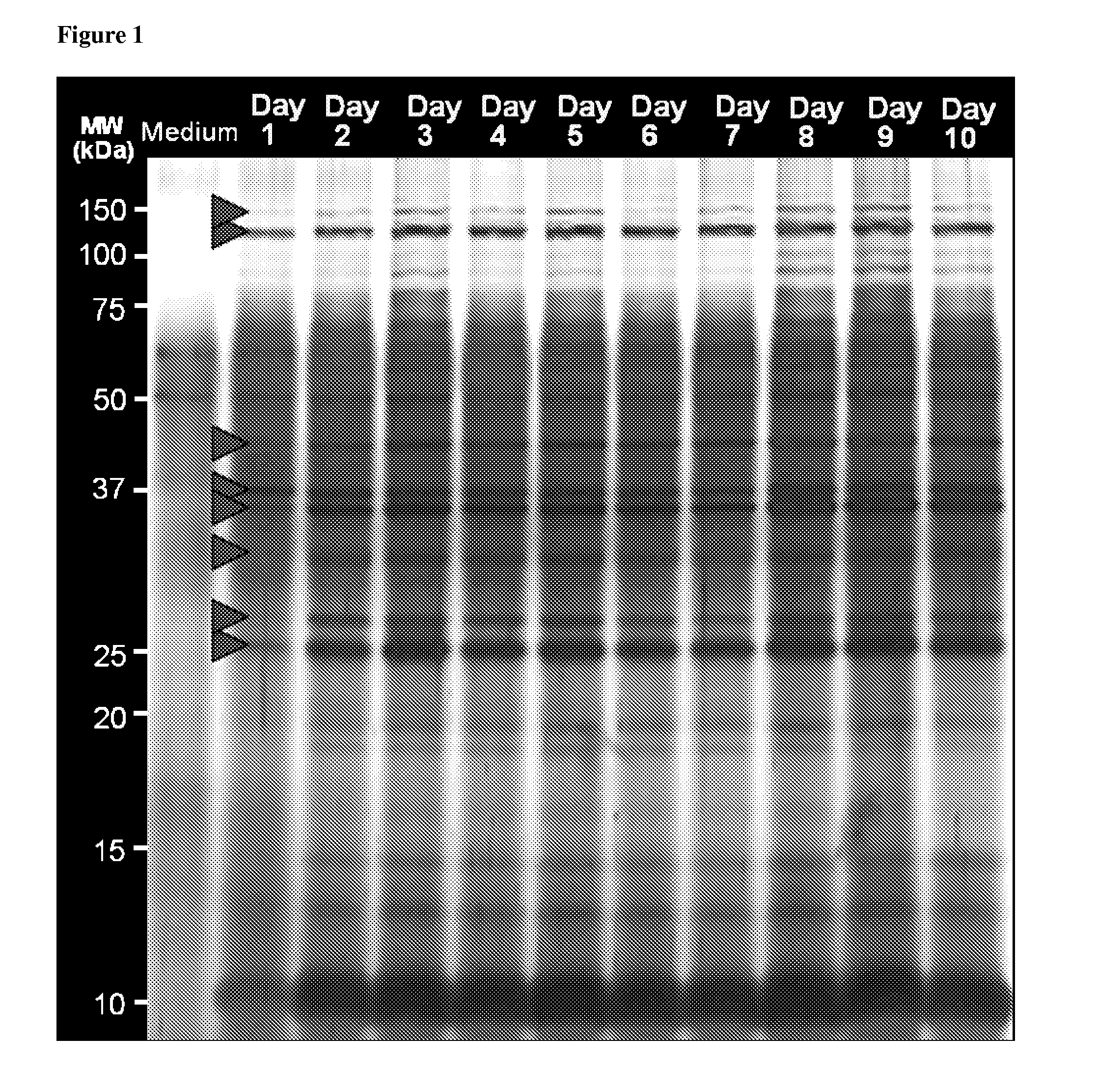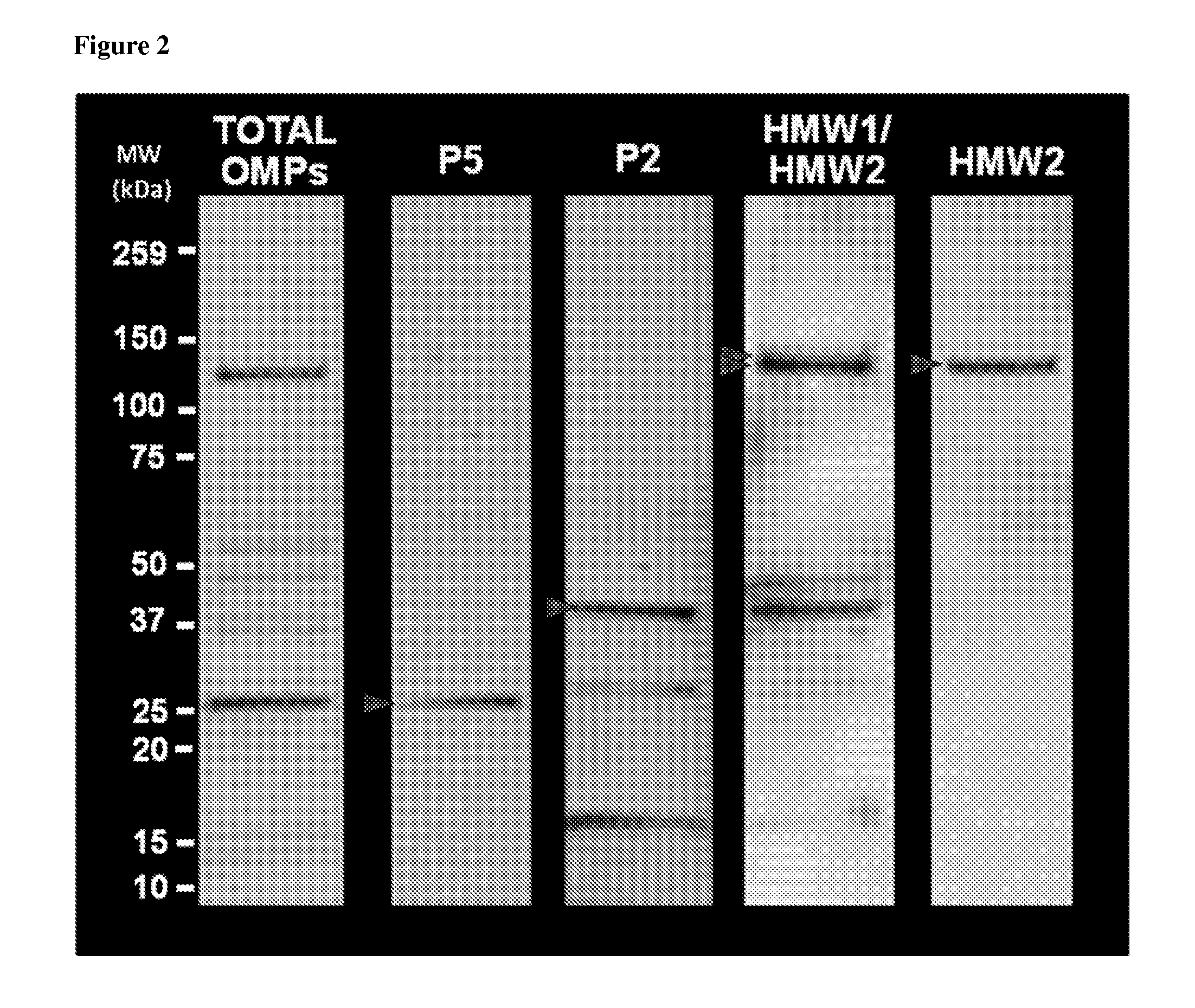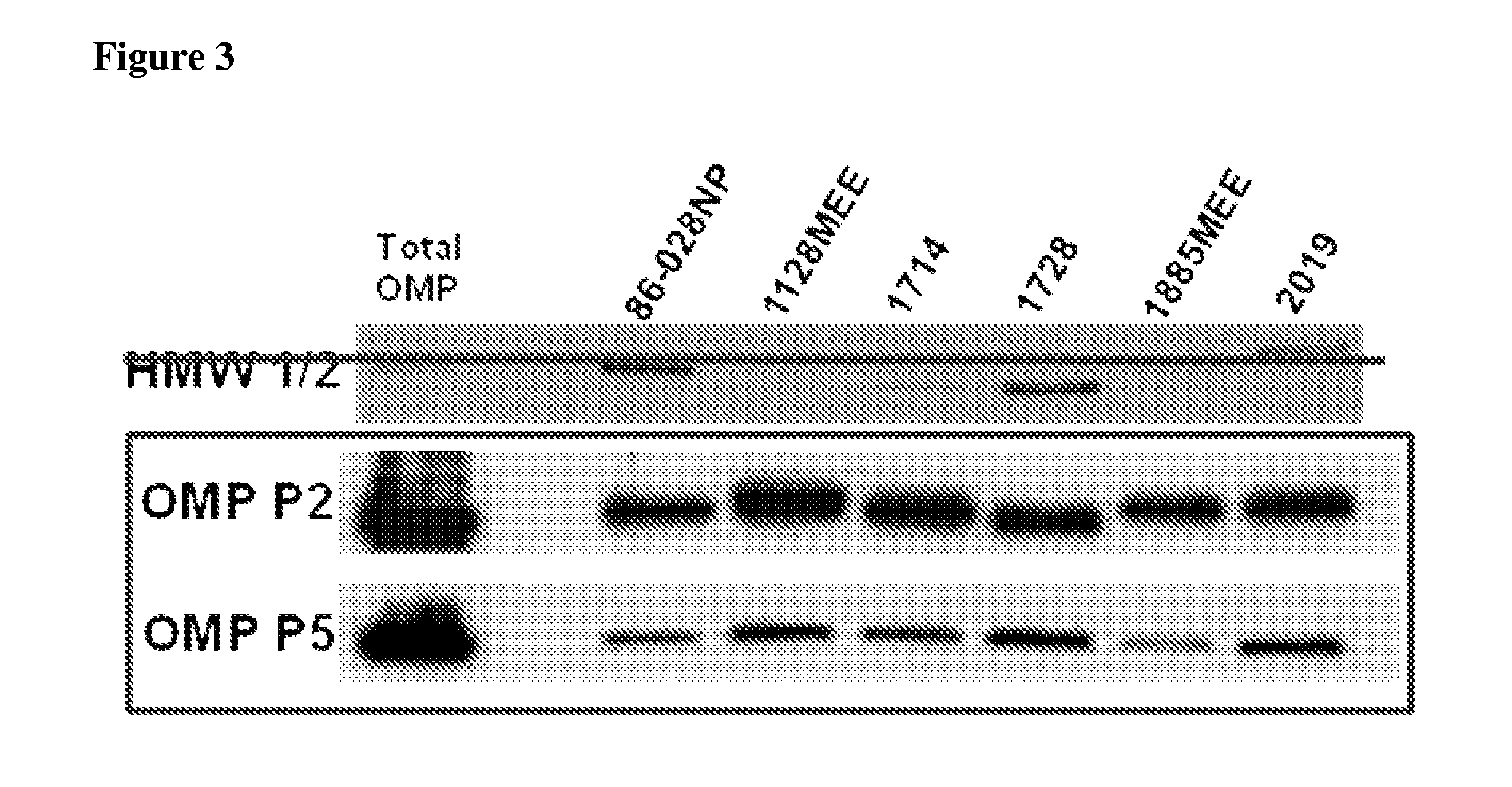Proteomics based diagnostic detection method for chronic sinusitis
a technology of chronic sinusitis and proteomics, applied in the field of proteomics, can solve the problems of limited diagnostic value of bacterial cultures, permanent sequalae, and need more effective management, and achieve the effects of improving outcomes, rapid identification, and effective treatment choi
- Summary
- Abstract
- Description
- Claims
- Application Information
AI Technical Summary
Benefits of technology
Problems solved by technology
Method used
Image
Examples
example 1
Determination of Signature Protein Profile for Pathogenic Bacteria
[0091]Supernatants from Nontypeable H. influenzae (NTHI) biofilm were analyzed to determine the NTHI signature protein profile. NTHI strain 86-028NP was cultured in eight-well chamber slides for 10 days and the resulting supernatants were collected at 24 hours intervals. The proteins in the supernatants collected from NTHI biofilm cultures were separated by SDS-PAGE and silver stain revealed a distinct protein profile maintained over time as shown in FIG. 1.
[0092]The proteins isolated from NTHI biofilm supernatants were analyzed by nano-liquid chromatography / tandem mass spectrometry (LC-MS / MS). The molecular weights of the identified proteins were compared to the molecular weights of the known protein profile for the NTHI strain 86-028NP ((Bakaletz et al. Infection and Immunity, 56(2): 331-335, 1988), and the identified proteins were scored based on their association to the 86-028NP protein profile using Mascot (Matri...
example 2
Detection of NTHI Biofilm-Specific Proteins in Paranasal Sinus Infection
[0096]In order to determine the protein profile of a human patient suffering from sinusitis, secretion samples are obtained from the upper respiratory tract of the patients. These samples are analyzed as described in Example 1 for the presence of OMP P5, OMP P2, HMW1 and HMW2. The protein profile of the patients is compared with the reference protein profile generated from the supernatants of in vitro NTHI biofilms as described above.
example 3
Identification of Protein Biomarkers Associated with Other Bacteria Species
[0097]The methods described in Example 1 are carried out with the supernatants from biofilms of other pathogenic bacteria species such as Streptococcus pneumonia, Moraxella catarrhalis, Staphylococcus aureus, Pseudomonas aeruginosa and Stenotrophomonas maltophilia.
PUM
| Property | Measurement | Unit |
|---|---|---|
| antibiotic resistance | aaaaa | aaaaa |
| adhesion | aaaaa | aaaaa |
| concentration | aaaaa | aaaaa |
Abstract
Description
Claims
Application Information
 Login to View More
Login to View More - R&D
- Intellectual Property
- Life Sciences
- Materials
- Tech Scout
- Unparalleled Data Quality
- Higher Quality Content
- 60% Fewer Hallucinations
Browse by: Latest US Patents, China's latest patents, Technical Efficacy Thesaurus, Application Domain, Technology Topic, Popular Technical Reports.
© 2025 PatSnap. All rights reserved.Legal|Privacy policy|Modern Slavery Act Transparency Statement|Sitemap|About US| Contact US: help@patsnap.com



